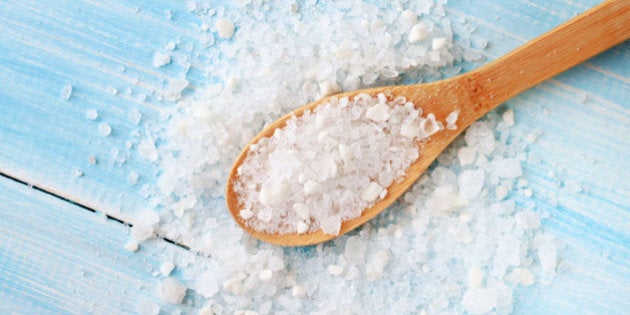
Written by Sybil Millar, Communications Advisor for the Ross Tilley Burn Centre, Critical Care and Infectious Diseases programs at Sunnybrook.
If you've been on Youtube in the past few years, chances are you've seen videos of people participating in various "challenges", like the cinnamon challenge, the banana Sprite challenge, the fire challenge and the mannequin challenge.
You can add another one to the list: the salt and ice challenge, which involves putting salt and water on your skin (usually the arm or hand), and then seeing how long you can hold a piece of ice against it. Many people, particularly teens, have been recording themselves taking the challenge and then posting it on social media. Often, the people in the videos look to be in a fair amount of pain, showing off painful-looking red welts on their skin afterward.
So, what's the problem with this challenge? Is it harmless, or is it actually dangerous?
"All the winner gets is a serious burn and a trip to the hospital," says Dr. Marc Jeschke, director of the Ross Tilley Burn Centre at Sunnybrook.
The salt and ice challenge causes injuries much more quickly, damaging the skin and nerve endings in the process.
You read that right -- a burn. The mixture of salt, water, ice and body heat creates a unique chemical reaction that actually drops the temperature of the ice down to -28°C (-18°F). Holding something that cold directly against your skin will result in a full-thickness burn after only two to three minutes.
"A full-thickness burn means that the skin is totally destroyed. The skin becomes leathery and hard, and if the burn covers a large enough area, surgery and a skin graft may need to be performed," says Dr. Jeschke.
So, why are people getting burn-type injuries from the salt and ice challenge, rather than typical frostbite? A key difference is the salt, which acts as an accelerant.
"In general, frostbite takes some time to develop, as the blood slowly crystalizes and causes damage," says Dr. Jeschke. The salt and ice challenge causes injuries much more quickly, damaging the skin and nerve endings in the process.
You may be wondering how salt can cause ice to get colder, when we often use salt to quickly melt ice on our driveways and sidewalks. The answer lies in the unique chemical mix that ice, water, salt and body heat create. If you remove one of the ingredients from the equation, the chemical reaction will not happen. There is no source of heat present when you put salt on your icy driveway, meaning a different type of chemical reaction occurs, causing the temperature of the ice to rise rather than dramatically plunge (like it does in the salt and ice challenge).
Much like other challenges that have come before it, taking part in the salt and ice challenge is not a good idea.
"When you hold something cold against your skin and you feel pain, it's your body's way of trying to protect itself," Dr. Jeschke says. "If you overcome the original feeling of pain, that's not because you're tougher or stronger, it's because the nerve endings have been destroyed. Sometimes, that nerve destruction can be permanent, along with scarring on the skin."
Read more injury prevention tips and information from Sunnybrook experts at health.sunnybrook.ca
Follow HuffPost Canada Blogs on Facebook
Also on HuffPost: